French street art in Paris thrives in full view
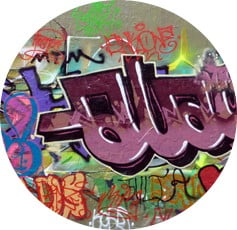
Though I have lived in the Paris area for many years, I had never heard of the street until I recently took part in an ‘exploring Paris’ photo workshop, run by WICE, a Franco-American cultural association.
Immigrants to France settle in a working class neighbourhood
Since the early 20th century this quartier has been the home of immigrants coming to work in France, mainly from North Africa and Asia, as well as factory workers and artisans.
Unfortunately some people think that the area is dangerous for tourists. Personally I have never felt at risk anywhere in Paris, although you always have to be wary of pick pockets, as in any big city.
Home to French and international artists and entertainers
Belleville, being a low rent quartier, is also home to a lively community of artists. Many famous people have made their home there, such as the writer Georges Perec and the photographers Willy Ronis and Henri Guérard, who shot many of their most famous photos in the quartier.
The well-known Café aux Folies at the top of rue Dénoyez, was once a café théâtre where Edith Piaf performed early in her career. An integral part of French history, the Folies was named after an 18th century watering place at one of the gates to Paris, which was infamous for the annual debauches of the city carnival.
Vibrant French street art
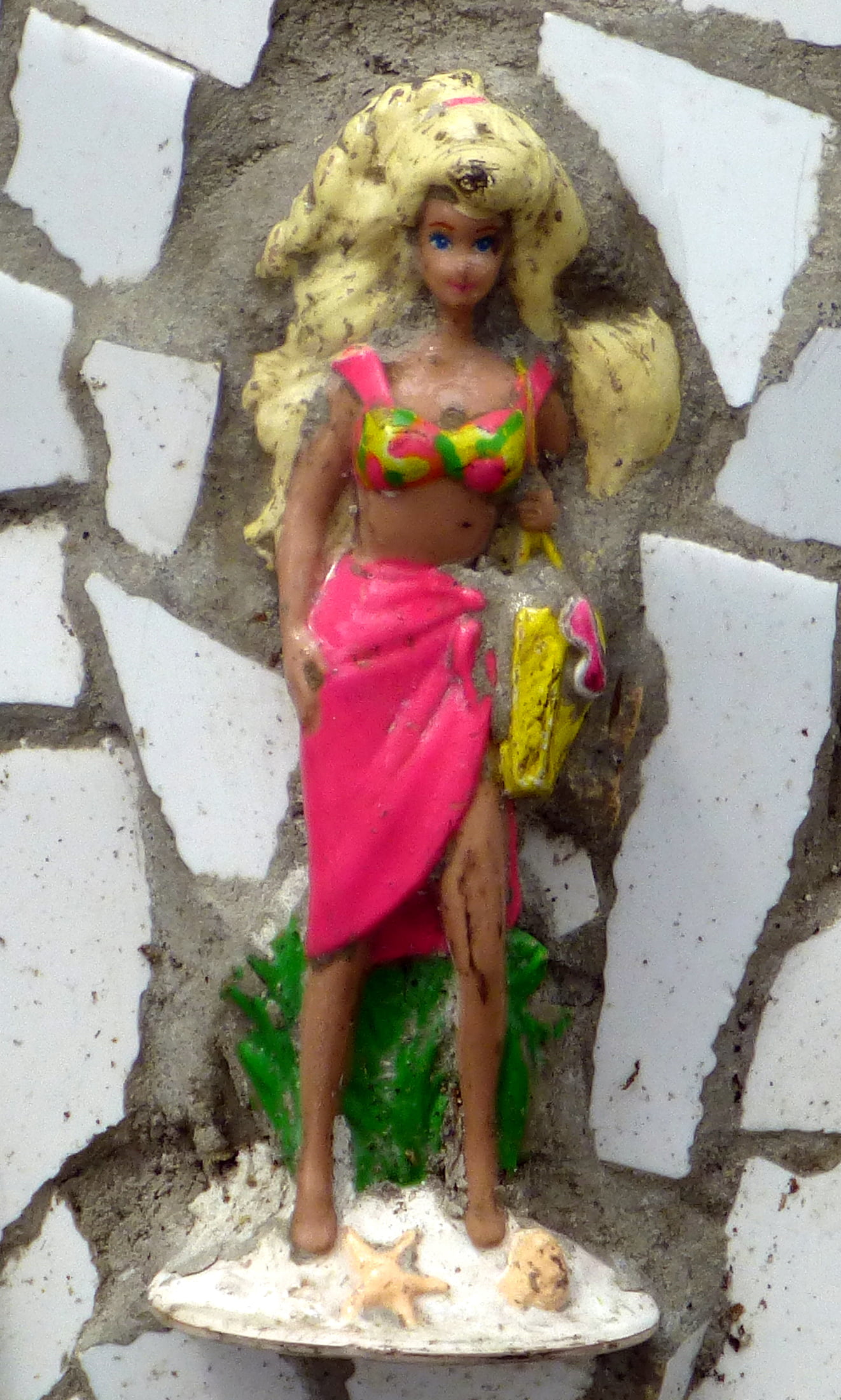
The streets are lined with planters that are taken care of by residents and individually decorated with poems, mosaics, toys, ragged Barbie dolls and more. You name it, and someone will have stuck it somewhere along the street.
A rare female street artist in Paris
Tristan des Limbes is the pseudonym of a well-known French street artist whose work can be found in the quartier. Tristan, usually a man’s name, evokes the word triste. Des limbes references the limbo to which un-baptised people are condemned in the afterlife, according to Catholic theology.
Tristan’s images are certainly not depictions of eternal happiness. Her images are disturbing, and filled with rage and frustration. They often depict internal organs being ripped out, or humans trapped inside other bodies trying to escape.
Threat to Parisian suburbs
However, the threat of gentrification looms large. If the quartier catches the fancy of the rich Parisian bobos (bourgeois bohème), the working class community will be pushed out into the cheaper suburbs. This is a trend that has already happened in so many Parisian neighbourhoods, most recently in Montmartre.
French street art thrives everywhere in France; read our articles on Strasbourg and on the temporary project that took place in Paris recently, and look at our photo projects in Paris: here and there.What do you feel about the gentrification of city neighbourhoods? Est-ce un bien pour un mal – a necessary evil? Share your thoughts in the comments box below.
Image credits:All photos © Henrietta Richer.

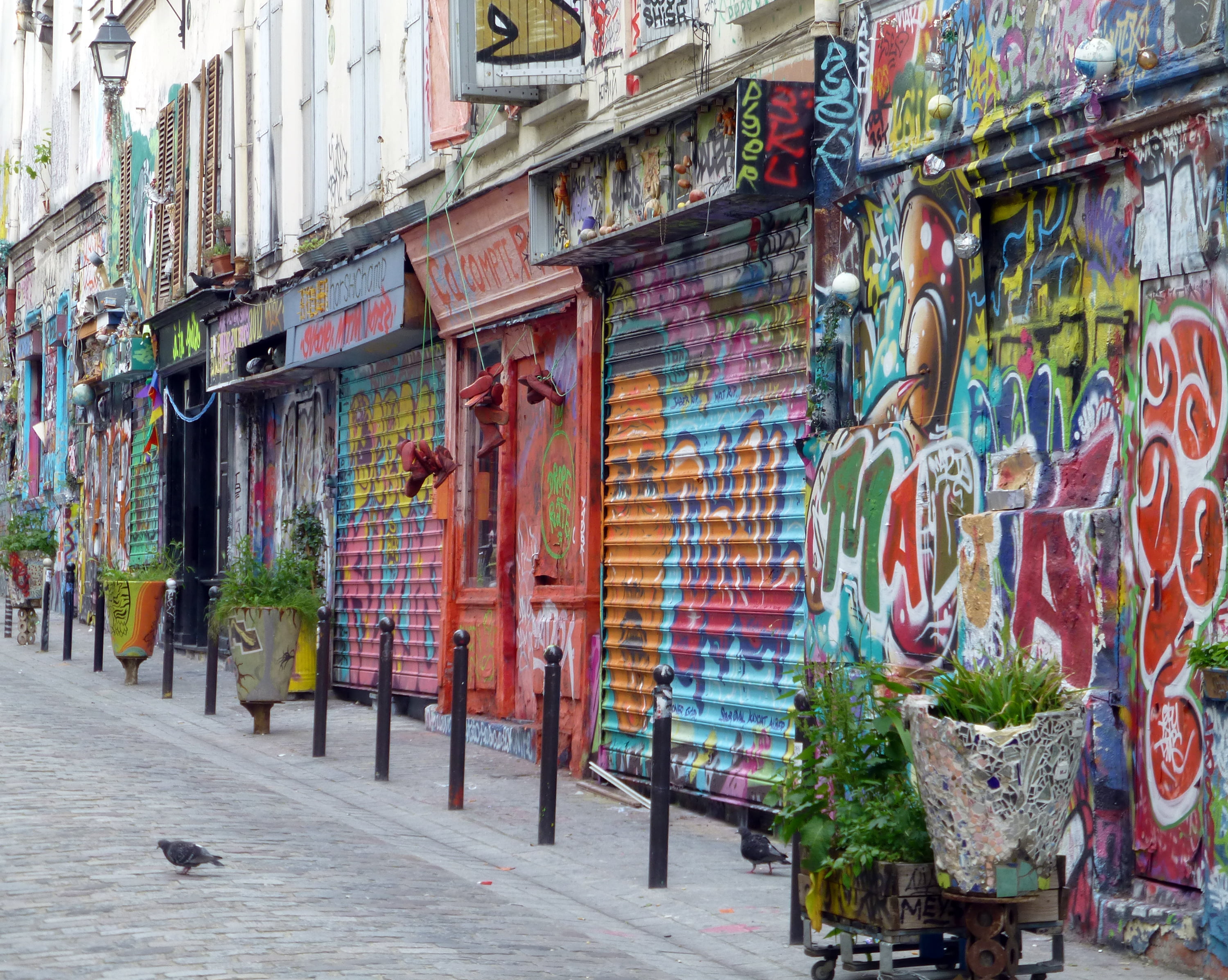
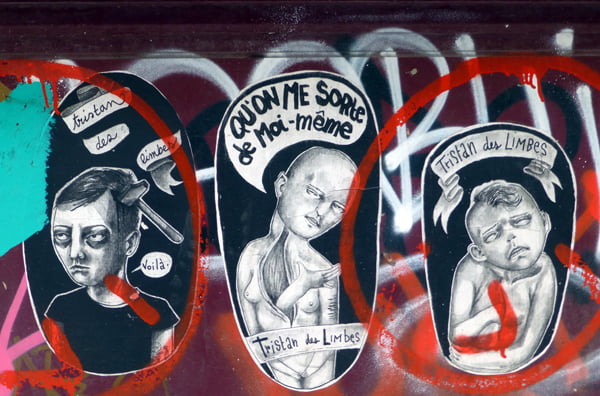
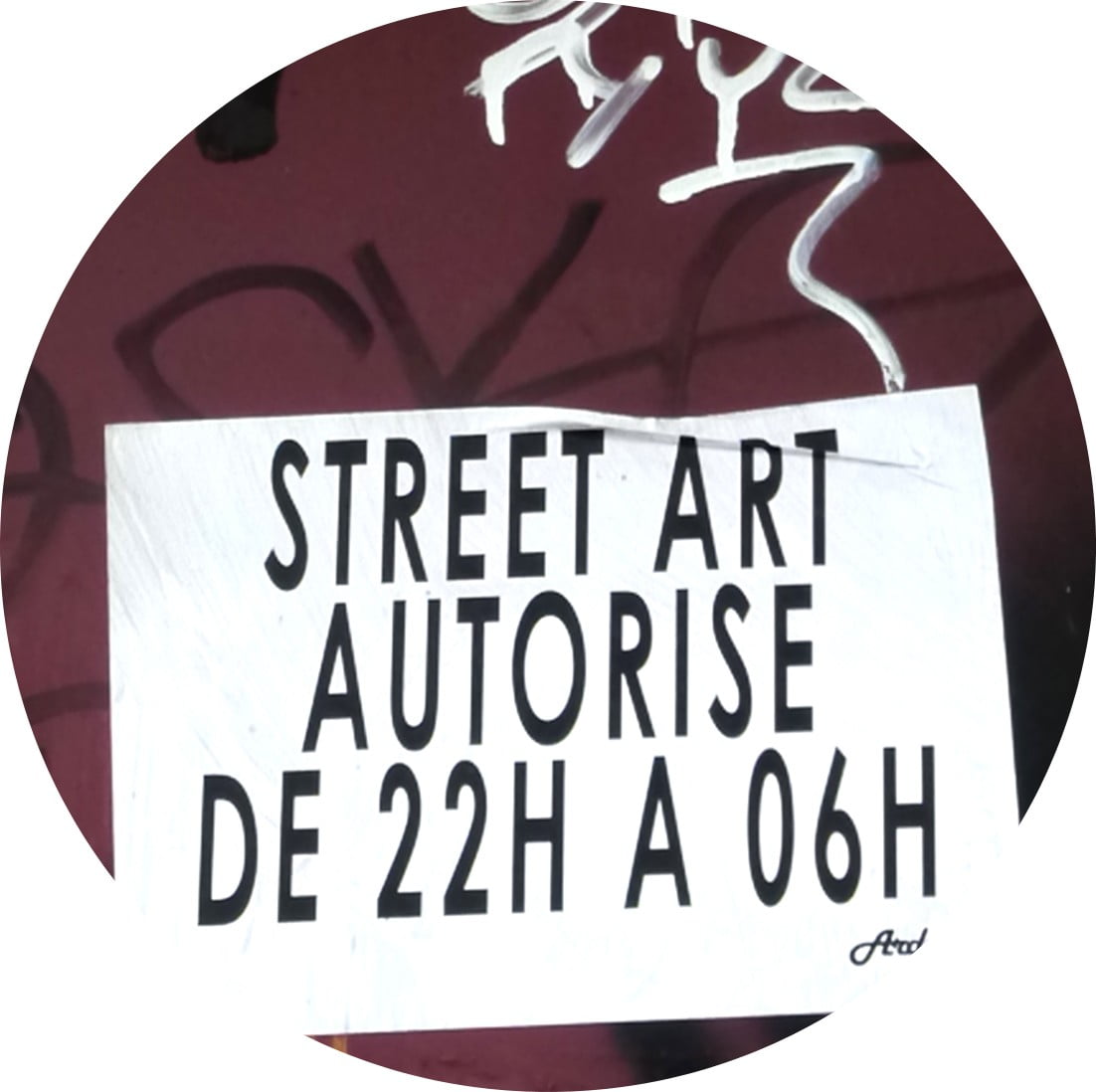

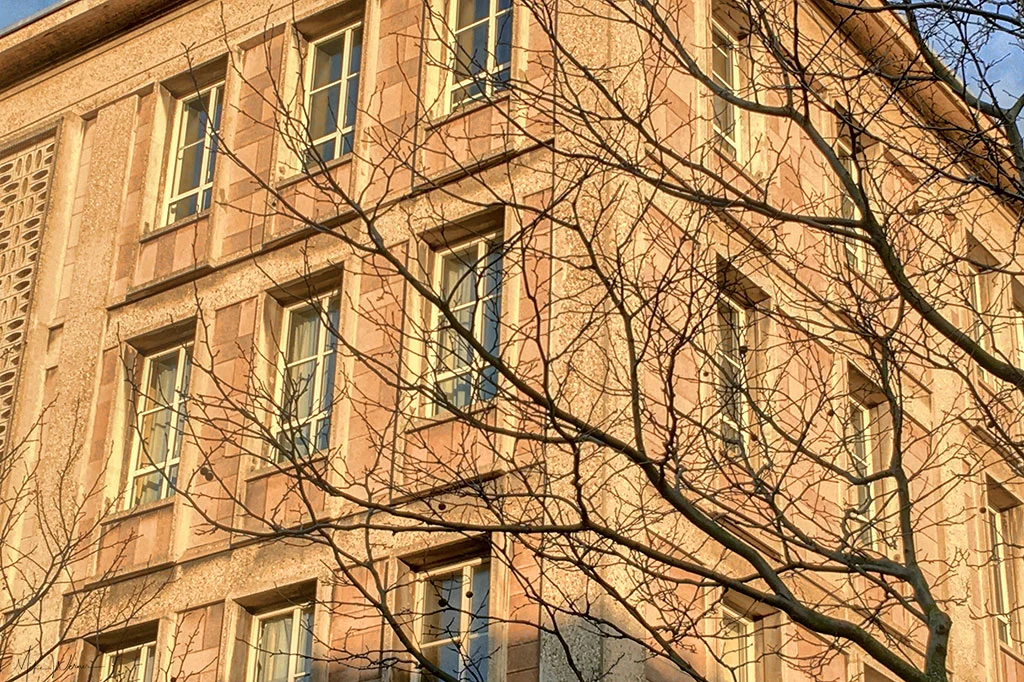
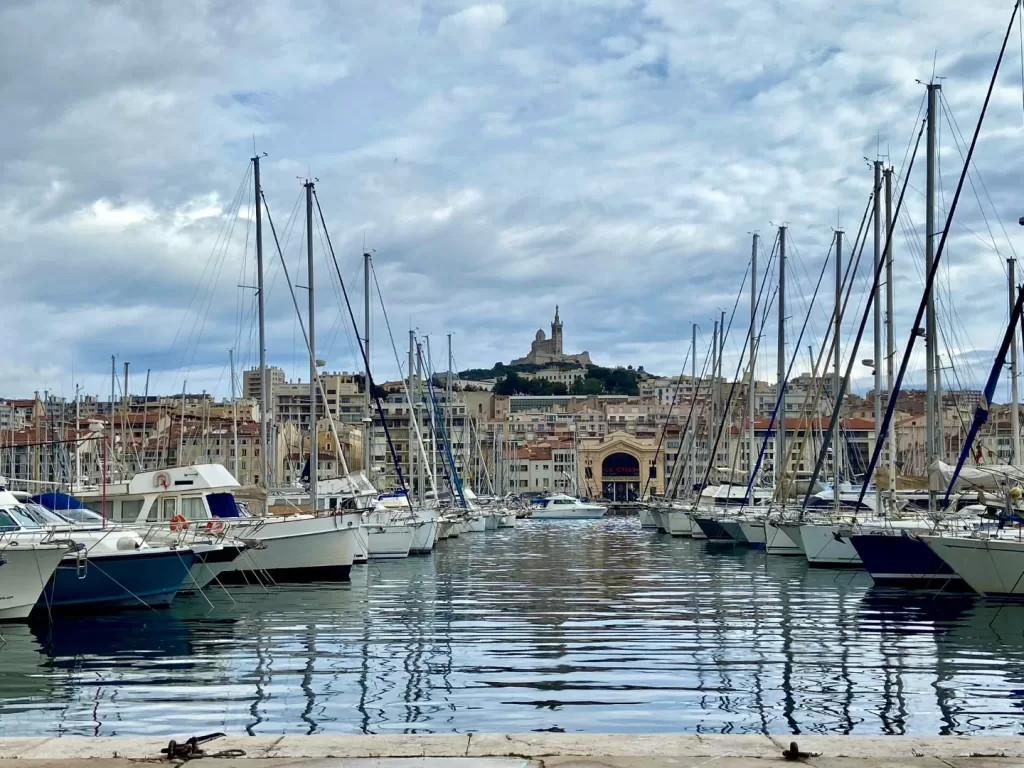



Bonjour, Henrietta,
Est-ce bien vrai que la rue Dénoyez est la seule rue de Paris à tolérer/encourager l’art urbain? Je vous le demande car j’ai lu il y a peut-être un an un article dans un livre-recueil d’articles sur Paris au sujet de Montreuil-sous-bois; J’en garde l’impressione que ce quartier s’adonne librement à la promotion de tout ce qui est cosmopolite et créatif. Si seulement toutes les grandes villes avaient un quartier où les graffeurs-artistes pouvaient afficher les oeuvres sans enfreindre la loi. Par contre, difficile de contrôler ça car bien des graffeurs s’obstineraient à être arrangés par un conseil municipal, disons; comme ça, ils se révolteraient en s’en allant ailleurs peindre des murs/façades de bâtiments à la bombe.
En fin de compte, je ne suis ni pour ni contre l’embourgeoisement d’un quartier. J’habite à une heure et quart de la capitale de l’état de Victoria, Melbourne (en Australie), où on peut trouver des faubourgs situés assez proches du centreville qui ont subi une sorte de ‘gentrification’. Moi, j’aurais dit que l’un de ces quartiers – Carlton – attire depuis pas mal de temps une population BTBG/professionnelle-urbaine/huppée, mais je viens juste de lire un article en ligne écrit par des proprios d’un bar qu’ils tiennent depuis 2010 (il y a si peu de temps, relativement), établi parce qu’ils s’étaient embêtés de n’avoir rien trouvé de divertissant, aucun bar où l’on pourrait être bien et niché dans un endroit indégotable par les abrutis/couillons. La phrase la plus positive que j’aie lu là-dedans, c’était l’opinion qu’un tel bar n’a pas du tout aliéné/ostracisé les citadins originaires du quartier, étant donné que ceux-ci passent boire un verre en rentrant de leur travail. Donc bon mélange.
Gerard/Fitz